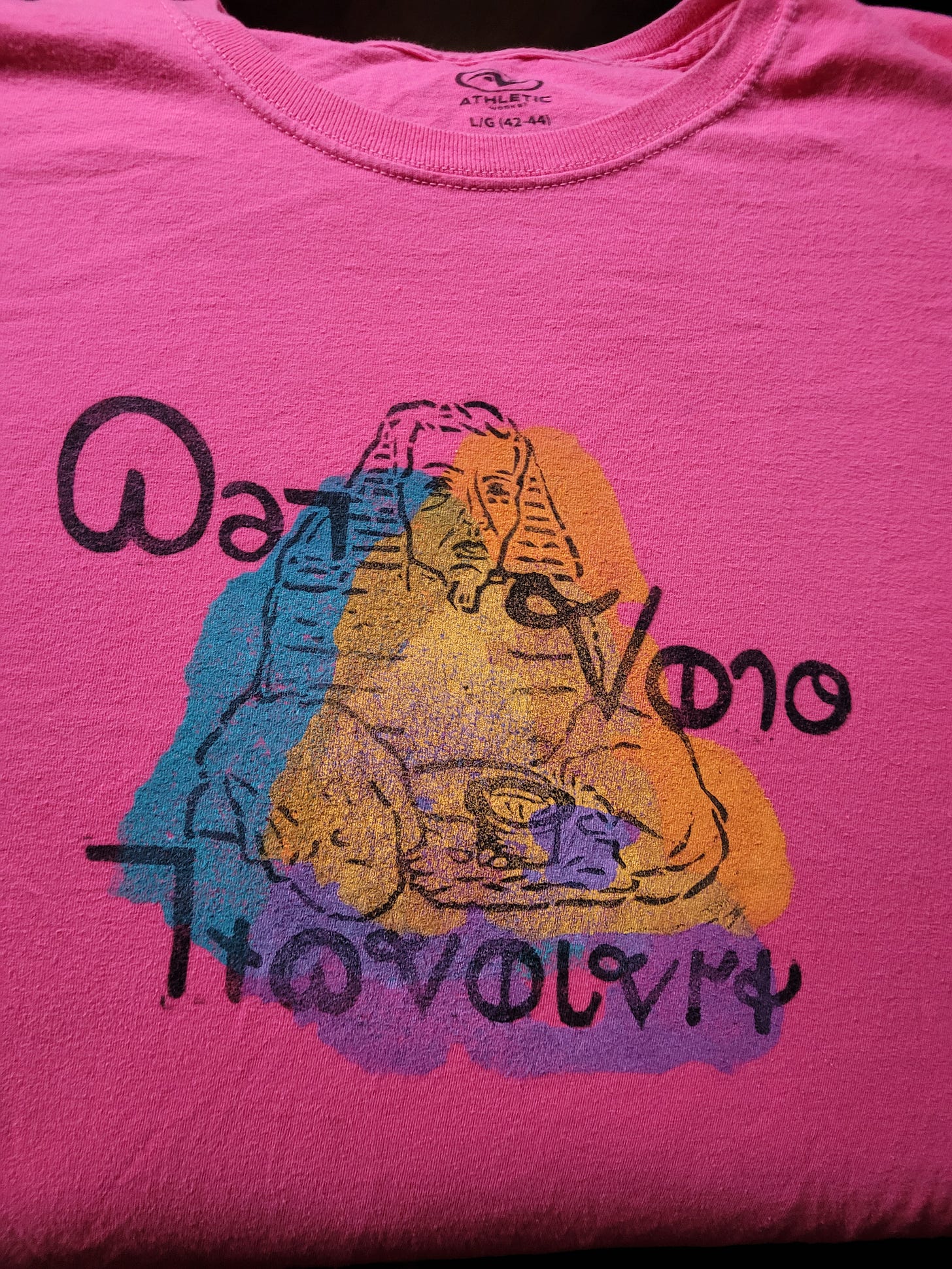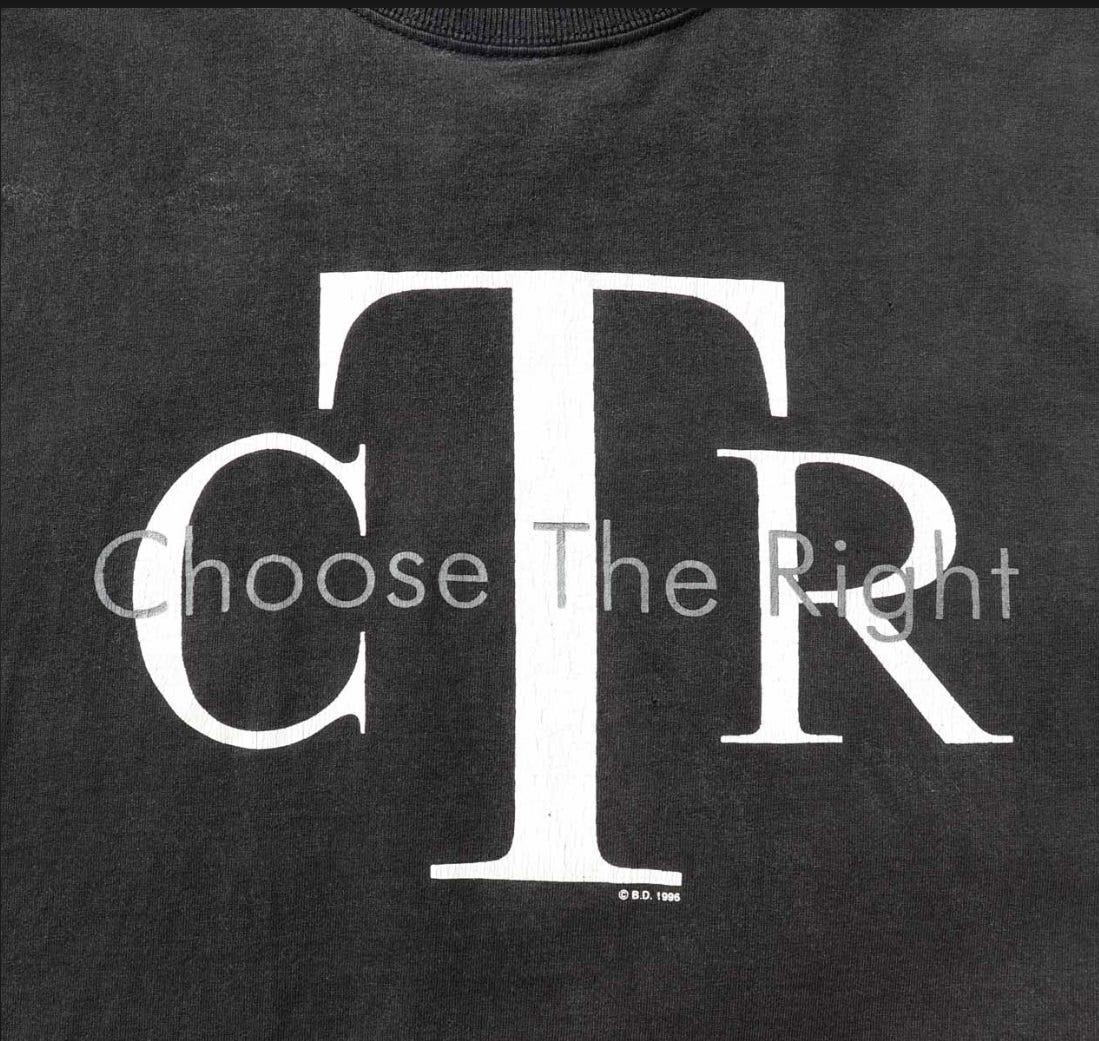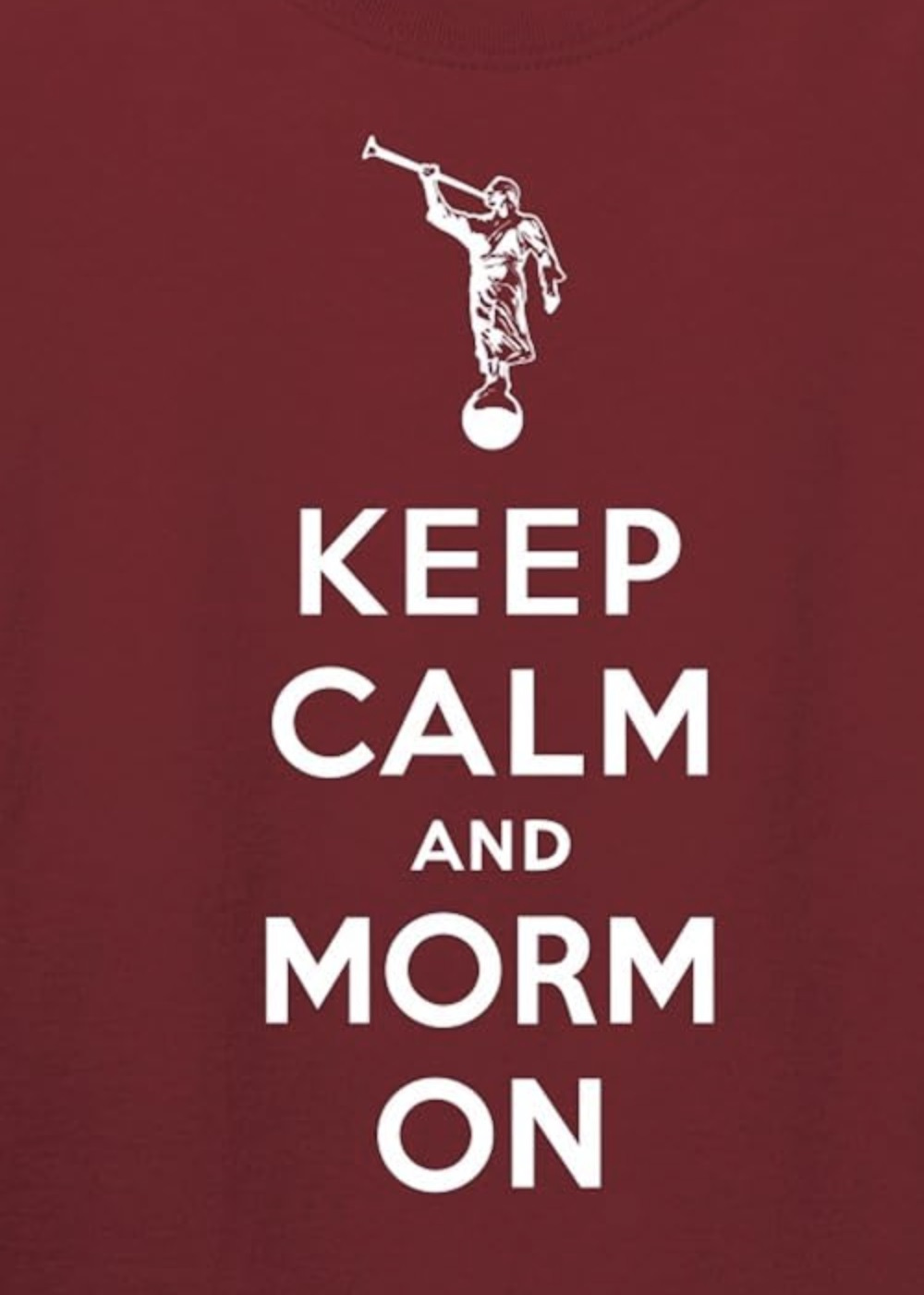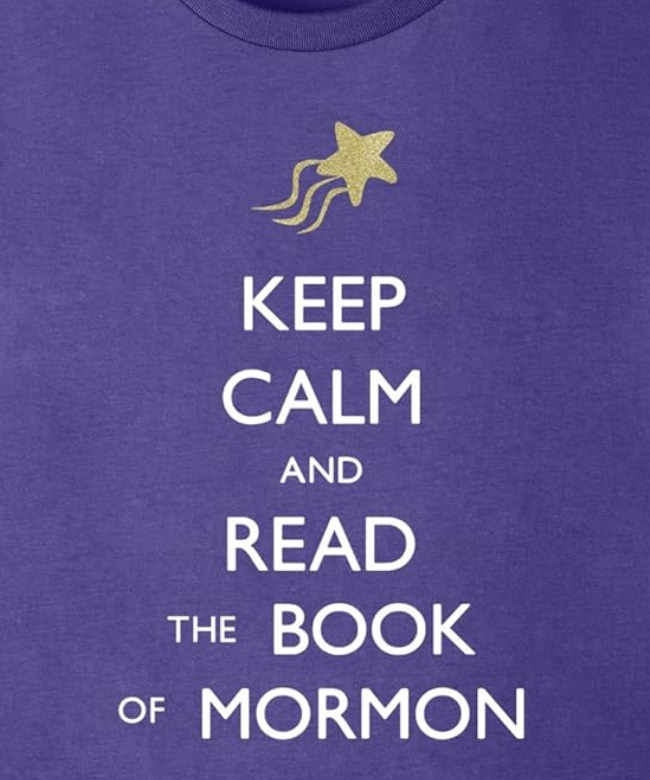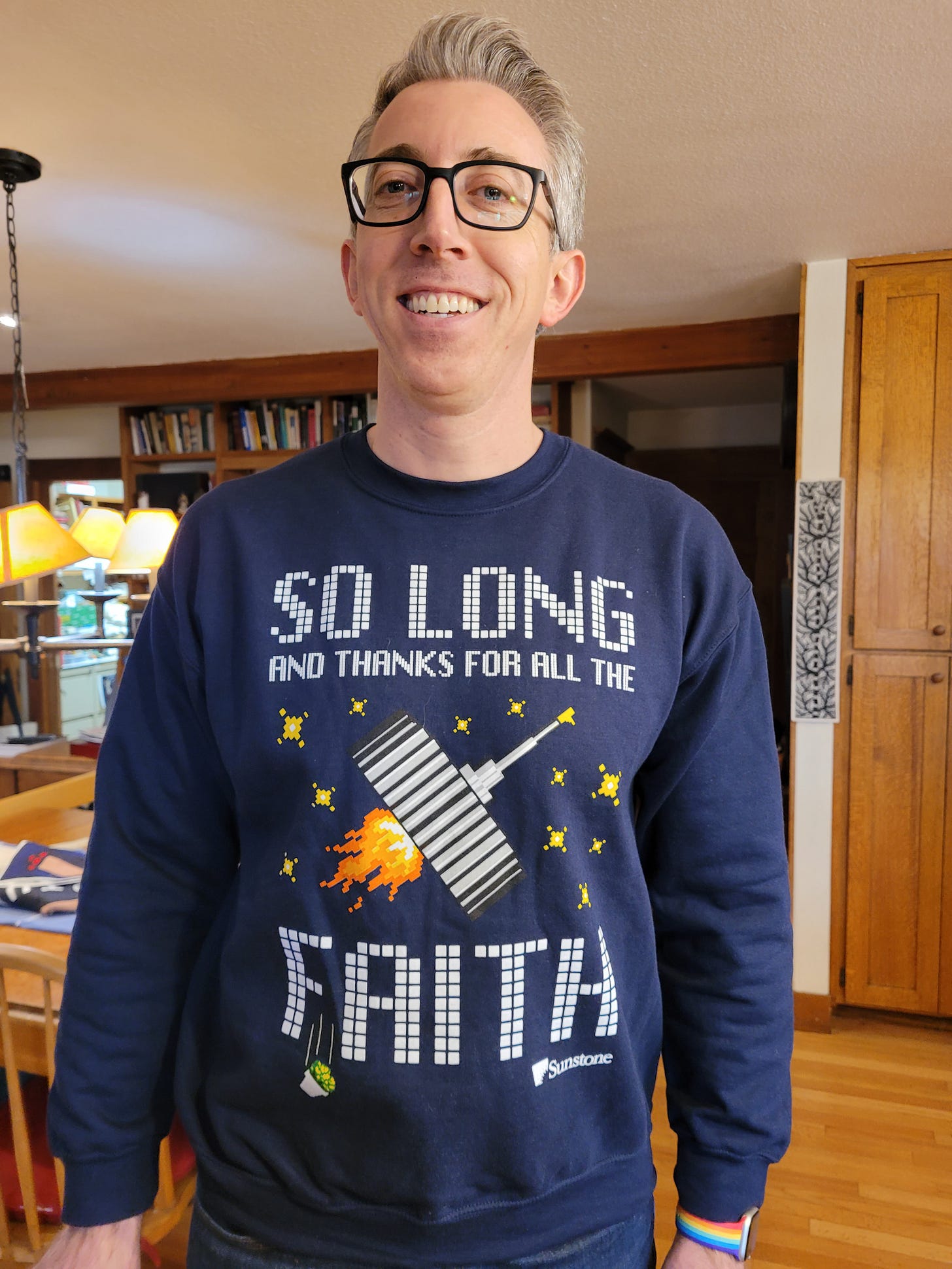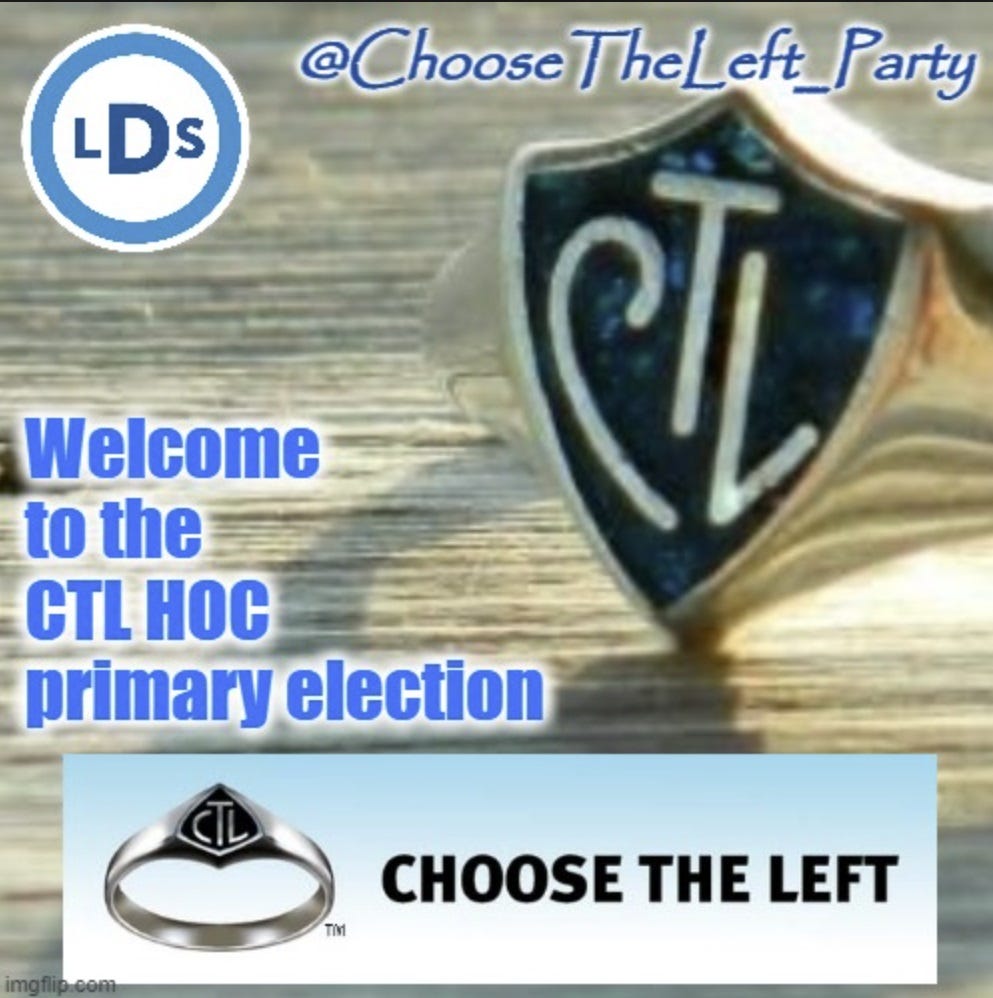Welcome to my Quirky Utah substack! Today we’re going to discuss the peculiar people who inhabit the “pretty great state” of Utah.
Utah is a curious place. The local culture is very different from that of surrounding states but, nowadays, you have to look closely to see signs of it. They will usually come in the form of t-shirts with unusual logos, billboards with advertisements featuring local culture along I-15 as you drive along the Wasatch Front, and a preponderance of former missionaries with expertise in a wide variety of foreign languages. We’ll look at a few examples of these things as we go along.
Once, while walking through the Penney’s store at the Town Centre Mall in Provo, I encountered a man wearing a biker-style jacket with the logo “Danite” stitched across the back. I managed to snap a photo of the jacket without attracting the attention of the fellow, but I can’t seem to find the photo now. I should have probably chatted him up, but the idea of real Danites in this day and age makes me a little nervous, and I wasn’t quite sure how my curiosity would be perceived. (The Danites were a group of followers of the prophet Joseph Smith who were originally charged with protecting him. But later, under Brigham Young’s tenure out here in Utah, they were implicated in criminal behavior involving threats and even murder. It’s widely believed that Brigham Young used them to discourage his opponents in the Utah Territory of the time.)
In any case, it's stuff like this that leads some people to conclude that Utah is a peculiar place. Indeed, we Mormons frequently invoke the word “peculiar” to describe ourselves. Like the Jews in Babylonian exile in ancient times, who adopted dietary and sartorial conventions as a way of setting themselves apart from the Gentiles by whom they were surrounded, we, too, have habits which set us apart from mainstream Americans. One example is our Word of Wisdom, a scriptural instruction to avoid caffeinated beverages such as coffee and tea as well as alcohol.
An LDS friend of mine recently told me that, while he was working at a think tank in Washington DC, he frequently ate out with colleagues who were not members of the LDS Church. At each of these events, he told me, he took pride in turning over the coffee cup at his place setting, believing that his table mates respected his commitment to this important principle of his religion. Nowadays, however, he has come to believe that they probably just thought he was a little weird or, in the context of this conversation, I suppose I should say “peculiar”.
Which leads me back to my main point. Why do we Mormons identify as peculiar? Where does this come from?
In the King James version of the Bible, 1 Peter 2:9 reads as follows:
“But ye are a chosen generation, a royal priesthood, an holy nation, a peculiar people...”
And this word appears in the Old Testament book of Deuteronomy, too, where it proclaims the Jews to be a peculiar people unto God.
It turns out that the word ‘peculiar’ had a different meaning in the days of King James when these verses were translated into English. At that time, it meant belonging to, as in the property of, or the responsibility of a specific party, in this case God.
To get better insight into this, it might be useful to consider the term “peculiar courts”. These were courts which handled marriage records, wills and, presumably, also baptismal / christening records and and other matters pertaining to the Church.
They existed in England and, presumably, other parts of Great Britain in the Middle Ages and up into the 19th Century, when centralization and certain other legal reforms rendered them largely moot. So they would have existed in the early 1600s when the King James version of the Bible was being translated. But peculiar courts are largely defunct today aside from a few ceremonial ones.
These peculiar courts were courts which lay outside the normal ecclesiastical jurisdictions of the time. According to the Wikipedia, there were three kinds of peculiar courts. These were:
1- the royal peculiars, which were areas that were under direct jurisdiction of the crown,
2- episcopal peculiars, which were areas that were under the jurisdiction of a bishop but which lay outside the land boundaries of that bishop’s authority
-and-
3- manorial peculiars, which were courts that were under the jurisdiction of a private interest such as an aristocratic family.
Nowadays, though, I think even Mormons have sort of lost sight of the original meaning of the word. Like the friend I mentioned above, we take pride in being a little quirky, and claiming to be a peculiar people confirms that notion. We’ve got our own lingo and a whole host of stories which aren’t widely known outside our circles. And that’s why we chuckle to ourselves when we see billboards along I-15 proclaiming such-and-such a miracle product or real-estate service as “the best thing since 2-hour church” or a t-shirt that says “Keep Calm and Morm On” or “Choose the Right” or, if you happen to be an LDS Democrat, “Choose the Left”.
Some revel in quirky and unique Mormon artifacts such as the Deseret Alphabet. I have a t-shirt emblazoned with the logo “𐐗𐐨𐐹 𐐧𐐻𐐫 𐐑𐐮𐐿𐑏𐑊𐐷𐐲𐑉” in big letters on the front along with a drawing of the sphinx statue from Gilgal Gardens which features the face of the prophet Joseph Smith. On the back, in smaller letters, you can read the Roman-script equivalent of the logo, which is “Keep Utah Peculiar”.
You can read more about this quirky project (𐐿𐐶𐐲𐑉𐐿𐐨 𐐹𐑉𐐪𐐾𐐯𐐿𐐻), commissioned by Brigham Young (𐐒𐑉𐐮𐑀𐐲𐑋 𐐏𐐲𐑍) in the late 1840s, here:
https://en.wikipedia.org/wiki/Deseret_alphabet
(By the way, I’m planning a series on scripts, which will feature the Deseret Alphabet or 𐐔𐐯𐑆𐐨𐑉𐐯𐐻 𐐈𐑊𐑁𐐲𐐺𐐯𐐻 in one episode. Once that is ready, I’ll post a link to it from this page.)
When all is said and done, though, Mormons’ claim to the status of a peculiar people is simply another claim to a special status with God just as the Jews have long viewed themselves as God’s chosen people. Which is why you might also sometimes hear Mormons refer to non-members, i.e. people who are not members of the LDS church, as Gentiles.
And that’s another interesting and peculiar thing about Utah, by the way. It’s the only place on Earth I know of where a Jew is just another Gentile.
Thanks for reading.
We’ll wrap up with some fun images of Utah culture:
First, here’s a t-shirt which a friend gave me. The logo is what inspired this episode on Utahns as a peculiar people. On the front is a drawing of the sphinx sculpture from the Gilgal Gardens here in Salt Lake City bearing the face of the prophet Joseph Smith accompanied by the logo “Keep Utah Peculiar” in the Deseret Alphabet. On the back, the logo is repeated in our regular Roman alphabet:
back:
front:
Mormon kids start wearing CTR rings when they’re attending primary as four to 11-year olds. I don’t remember if I ever had one. Some people keep wearing them into young adulthood and beyond. Here are several examples I found online:
And sometimes you’ll see it on t-shirts as well:
Here are some other quirky Mormon-themed t-shirt designs:
And here’s a good friend of my mother in law’s who is wearing a t-shirt commemorating the first Provo temple, which was dedicated in 1974 and torn down exactly 50 years later in 2024. To many, that temple resembled a spaceship. Hence the Hitchhiker’s Guide to the Galaxy reference:
Finally, here’s a notice for a recent election which was created by LDS Democrats, a left-leaning group of Mormons residing in Utah:
I’m thinking I’d like to get myself a CTL ring. Maybe I’ll spring for one sometime soon.





